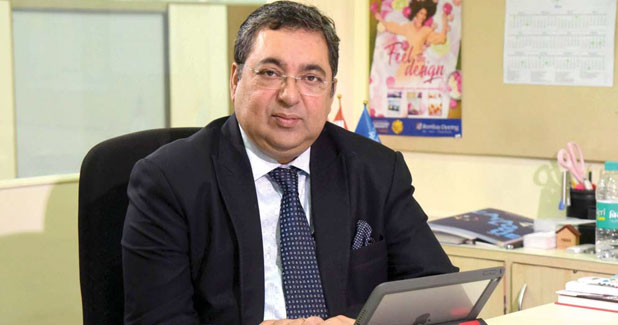
“We outsource our entire, product portfolio”
Established by Nowrosjee Wadia in 1879 as a small operation of Indian spun cotton yarn dip dyed by hand, Bombay Dyeing has now grown to be one of the most respected and trusted brands in the country.
Established by Nowrosjee Wadia in 1879 as a small operation of Indian spun cotton yarn dip dyed by hand, Bombay Dyeing has now grown to be one of the most respected and trusted brands in the country.
Alok Banerjee, Chief Executive Officer, Bombay Dyeing, throws some light on his company’s vision and how home textile market is shaping up.
How did the home textile story begin in your company? How did it progress till now in product innovations?
Bombay Dyeing was established by Nowrosjee Wadia in 1879 as a small operation of Indian spun cotton yarn dip dyed by hand. Since then, for more than 139 years, it has remained an inseparable part of Indian consumer’s daily life and is amongst the most reputed and respected establishments in India. The company has continuously strived to reinvent itself with changing times which has helped in retain its market leadership position for such a long time. Recently, we launched customisation of bed sheets. This is first time in the world that any company is offering customisation of bed sheets to the customers. People want detailing to take place as per their need and requirement. We enable that at a very affordable price point. We give one bed sheet with two pillow covers at Rs 1,999 only, completely customised.
What are the buyers expectations in home textiles today? How does your company meet these expectations? What kind of trends and trends are visible today and what do they portend for the future of home textiles?
In home textile segment, buyers have two primary expectations – freshness in designs and quality of products. We have an in-house design studio where our designers work to provide our customers with fresh and innovative designs. Also our quality and sourcing team work with each of our strategic vendors to ensure that they understand our brand DNA and provide best quality products to our customers.
What are the various set-ups in your company for production, innovation and marketing?
We don’t have a production facility. We are no longer manufacturers but have turned into retailers by outsourcing our entire product portfolio. We have identified strategic vendors, with whom we work closely to ensure products of Bombay Dyeing standard reach our end consumers. We also have category team with a Category Head for each of our core categories – bed linen, bath linen and co-ordinates, which works on product innovations. And then we have a marketing team which looks after branding and promotion activities of Bombay Dyeing.
If in export, what percentage of production goes into export? Where are the markets, old and newly emerging?
We are present in only domestic market. However, we are in talks with a few partners to expand our presence in overseas markets.
With the tremendous growth of home textiles, are we seeing competition intensifying in India in this market? How do you plan to keep ahead?
Organised segment is only 15 percent and unorganised segment is around 85 per cent. The field is large and there is ample opportunity for large number of players to come in and get into this space. In organised segment, we are leaders and we hope to maintain our leadership position by releasing new collections every season and having stringent quality controls.
How do you see the home textile market shaping up for the future? What are your views and suggestions for the industry and the Government to boost its growth further?
Home textile industry is a self-reliant industry with complete value chain from the procurement of raw materials to the production of finished goods. The slowdown in the Chinese economy has rendered the cost of textile production in China high. This has offered an opportunity for Indian textiles sector to grab the market share of Chinese players. The Government under the ‘Make in India’ initiative has undertaken a number of steps to improve ease-of-doing business in India. More such initiatives from government will help textile industry to boost its growth further.
– SAMUEL JOSEPH


